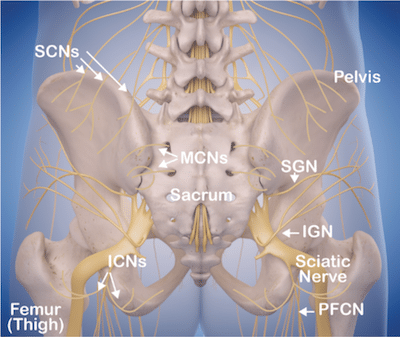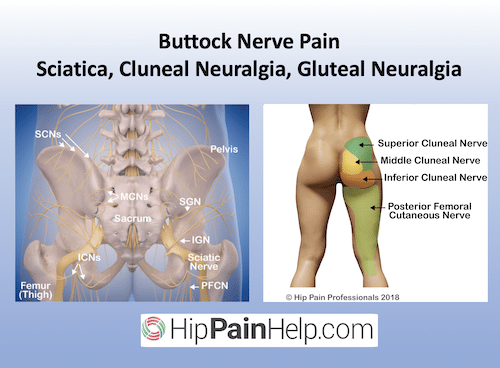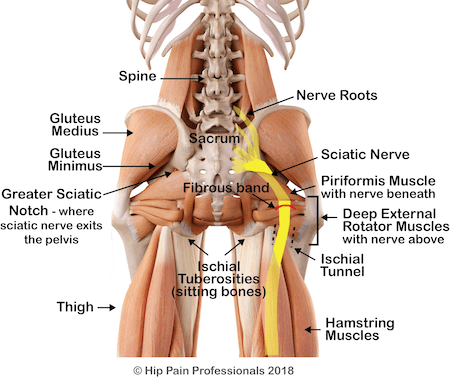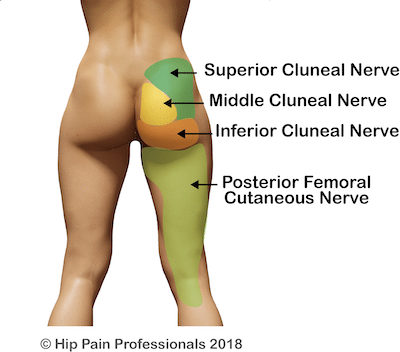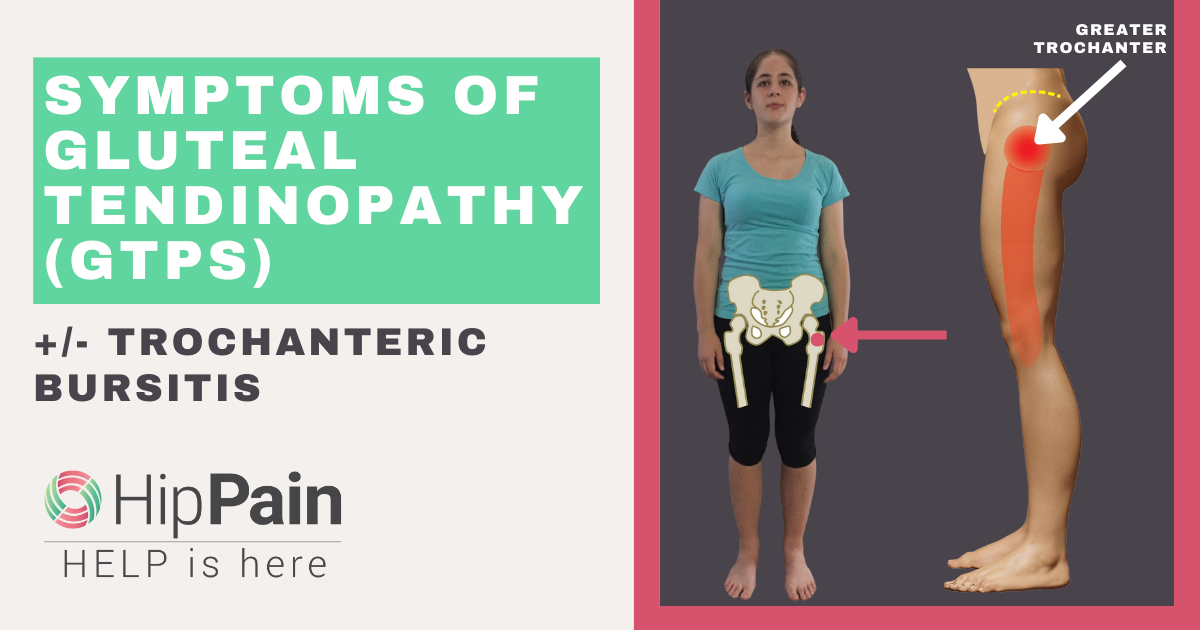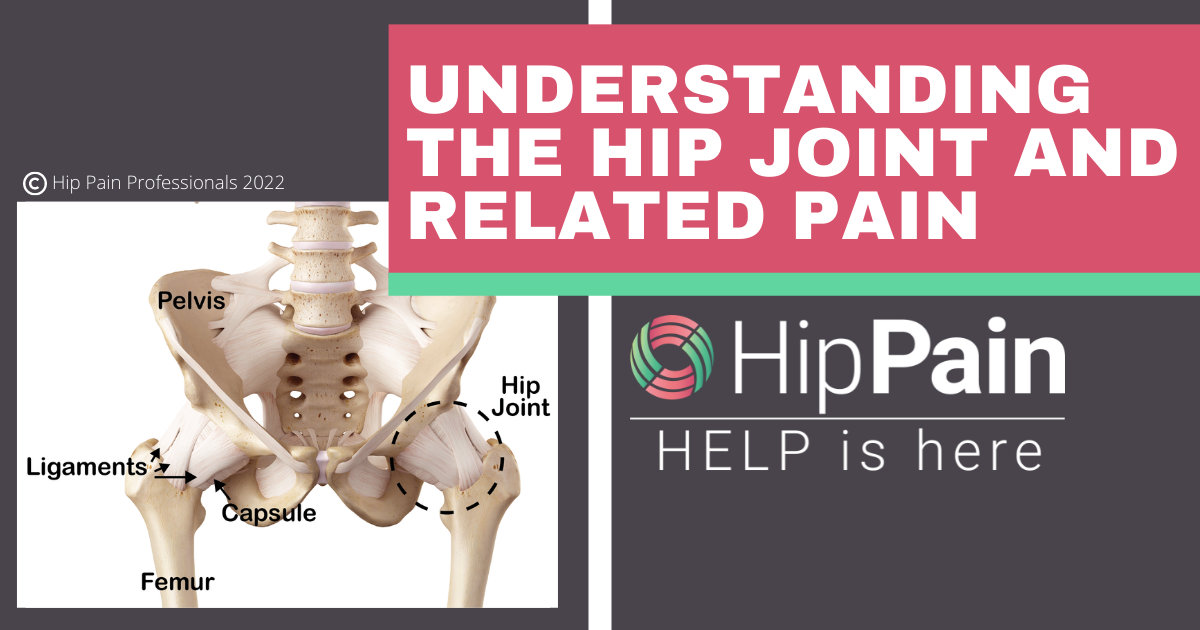Nerve Related Pain / Neuralgia in the Buttock Region
The Sciatic Nerve and “Sciatica”
The term “sciatica” is often used incorrectly in reference to any pain felt in the area running from the back, down into the leg. See our section on “back-related hip pain” to read more about radicular pain associated with irritation of the nerve roots as they exit the spine. The sciatic nerve does not exit the spine as a single nerve. Nerve roots from the lower levels of the lumbar spine (lower back) and sacrum (tailbone) join together in the pelvis. Here they form a thick, cord-like structure, called “the sciatic nerve”. This large nerve exits the inner pelvis via the greater sciatic notch and runs through the buttock and down the back of the thigh.
The sciatic nerve can sometimes be compressed, irritated or entrapped as it runs through the soft tissues of the buttock. Traditionally, sciatic pain (neuralgia) generated from issues within the buttock has been termed “Piriformis Syndrome” (see the picture above to view the piriformis muscle and the sciatic nerve). This was based on a finding that in about 20% of the population, all or part of the sciatic nerve runs through the piriformis muscle.
Compression of the nerve within the piriformis muscle was thought to be the problem in all cases of nerve related buttock and leg pain that could not be associated with a problem in the back. It is now thought that this is the case in only a relatively small number of cases and that this condition has been over-diagnosed. So much so, that some believe it does not exist at all.
The term “Deep Gluteal Syndrome” has been suggested recently as an alternative term to piriformis syndrome. It refers to any irritation of the sciatic nerve in the deep gluteal space, beneath the gluteus maximus muscle. In this space, the sciatic nerve may be compressed or irritated at the level of the piriformis, as it runs over the deep external rotator muscles or by fibrous bands anywhere along its path through the buttock. The nerve can also be irritated as it leaves the pelvis to head down into the thigh. Here it runs through a tunnel (ischial tunnel), between the outer side of the sitting bone (ischial tuberosity) and the upper thigh bone (femur) (See picture above). In this tunnel it may be squeezed between the bones or irritated by unhealthy hamstring tendons (tendinopathy).
Feel that your buttock pain may be related to the sciatic nerve? Check out our FIRST FREE LESSON as part of our in depth self-help course, discussing symptoms and demonstrating tests you can try yourself at home – click here to find out if you have this condition and what to do about it!

